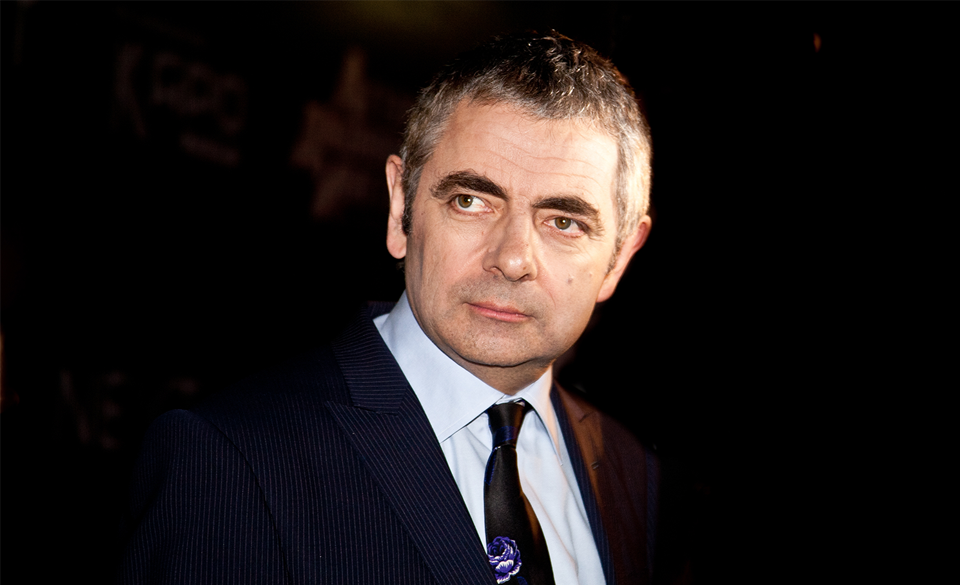The most expensive car insurance claim ever was made by actor Rowan Atkinson, who received a bumper payout of £910,000 after crashing his McLaren F1 supercar into a tree.
Famous for his portrayal of bumbling Mr Bean in the ITV sitcom, Atkinson had two accidents in the sports car during his 18-year ownership between 1997 and 2015.

© magicinfoto / Shutterstock
The second smash, in 2011, caused the record amount of damage to the rare vehicle - one of only 107 ever made for regular road use by the Formula 1 racing car manufacturer.
Atkinson’s unique burgundy red car was number 64. It cost so much to repair because it had to go into the specialist McLaren workshop, as the parts couldn’t be bought or fitted at a regular car body shop.
Rowan Atkinson car accidents
McLaren manufactured a handful of the cars for road use between 1992 and 1998.
Blackadder star Atkinson, 68, reportedly paid £540,000 for his McLaren F1, which had a top speed of 240 mph and a 4.5-litre engine. The fastest regular car at the time, it was declared “the greatest
supercar ever built” by many enthusiasts.
There are only eight authorised McLaren service centres globally.
Despite the vehicle’s rarity and cost, Atkinson drove it regularly, rather than locking it away in a garage just for the prestige and investment value.
He did 65,000km in his McLaren over the years, having a minor collision in 1999, when he shunted into the car in front, causing some slight damage to the bonnet.
However, his second crash, in 2011, was much more serious. By this time, the model had been out of production for 13 years, so the parts were much harder to obtain.
The star had apparently skidded on a wet road, lost control of his car and spun into a tree. The crash happened in pouring rain on the A605, near the A1 junction.
Why did the insurer pay for the repair?
The car had been purchased for the list price of £540,000 and the repair was estimated to cost £910,000. This begged the question why the insurer would even consider paying out for a repair, rather than writing off the vehicle.
In most cases, with an average car, if the repair was more than the total value of the vehicle, it would simply be written off.
In fact, it took Atkinson, who suffered a shoulder injury in the accident, eight months to persuade the unnamed insurer to approve the payment. The company finally gave the go-ahead for a repair because it recognised the F1’s value had increased significantly since it was purchased.
Unlike most cars, which lose value the moment they are driven away from the showroom, the ultra-rare F1 has become much more valuable. It was estimated to be worth around £3.5 million at the time of the accident - almost £3 million more than when it was manufactured.
The repair work took a further eight months to complete at McLaren’s specialist repairs centre at its base in Woking, Surrey.
The repairs were particularly challenging because the supercar was made from a carbon fibre body, so it could never have been repaired at a regular garage, where they wouldn’t have had the materials.
Once the car was back on the road, Atkinson said it was like “putting on a familiar sweater”. He said it would be a “crime” not to drive it regularly.
Did the insurance go up?
Motor insurance experts speculated how much Atkinson would have paid to cover his car after his expensive accident. Although no-one knew the definitive answer, they suggested his annual premium may have been as high as £60,000 - particularly because he liked to drive regularly.
They also believed his insurance excess may have risen to around 50% of the F1’s total value, or that he may have had a restricted mileage clause following his accident. He would certainly have lost his no claims bonus.
He once told a journalist the car was “never bought as an investment”; he bought it for its quality of design.
He eventually sold the P-registered car in 2015, reportedly to a British buyer who intended keeping it on the road, as Atkinson had.
How to avoid car accidents
Although it’s not possible to completely avoid car accidents, there are ways of minimising them.
Using aids such as a reverse camera, parking sensors, folding mirrors, etc. can lead to safer driving. If your car doesn’t come fitted with these as standard, it’s possible to have them installed by a retrofit specialist.
Regardless of the make and value of your car, no-one wants to risk having an accident, not only because of the potential for injury, but also due to the inevitable increase in insurance premiums!

